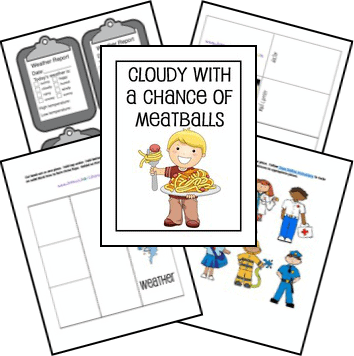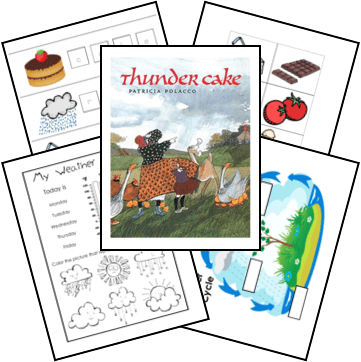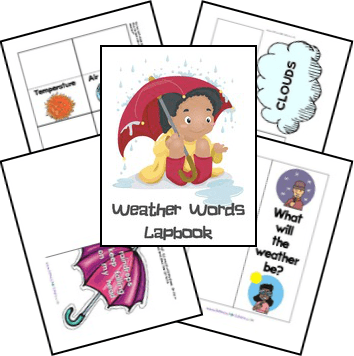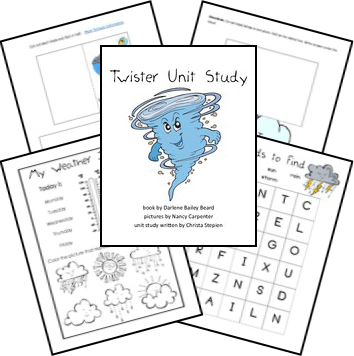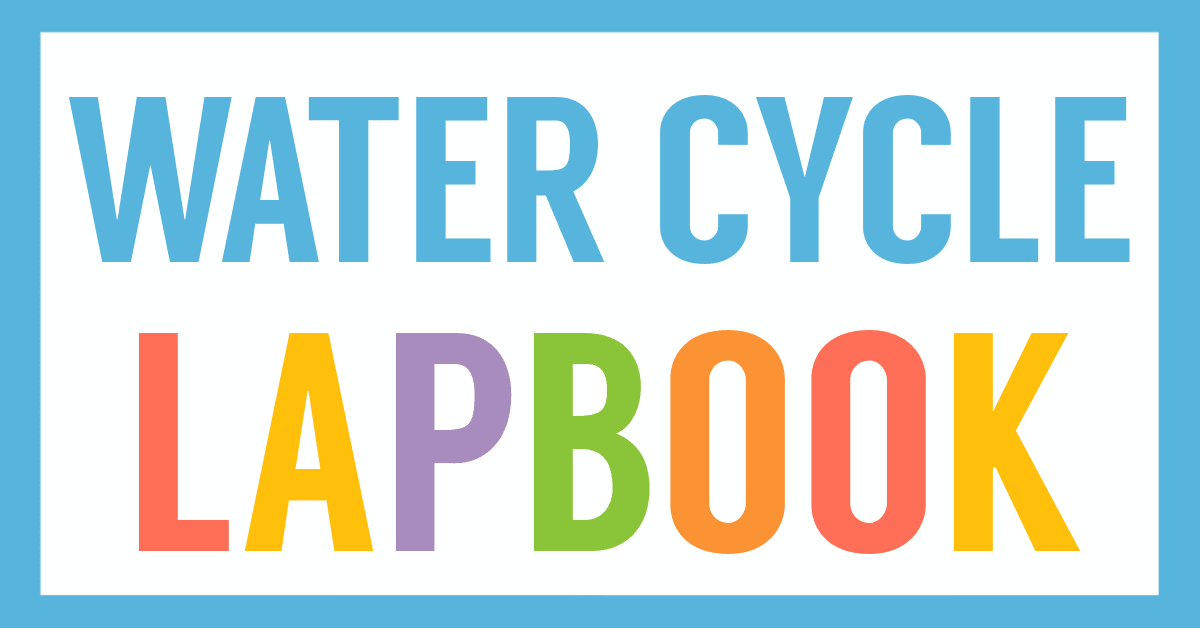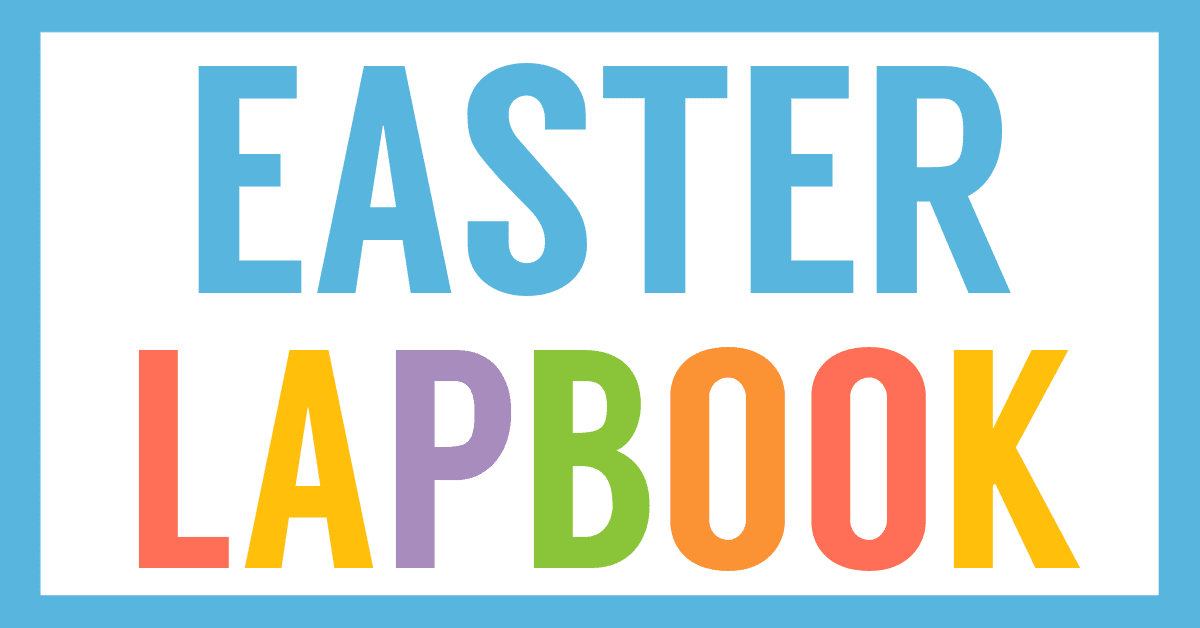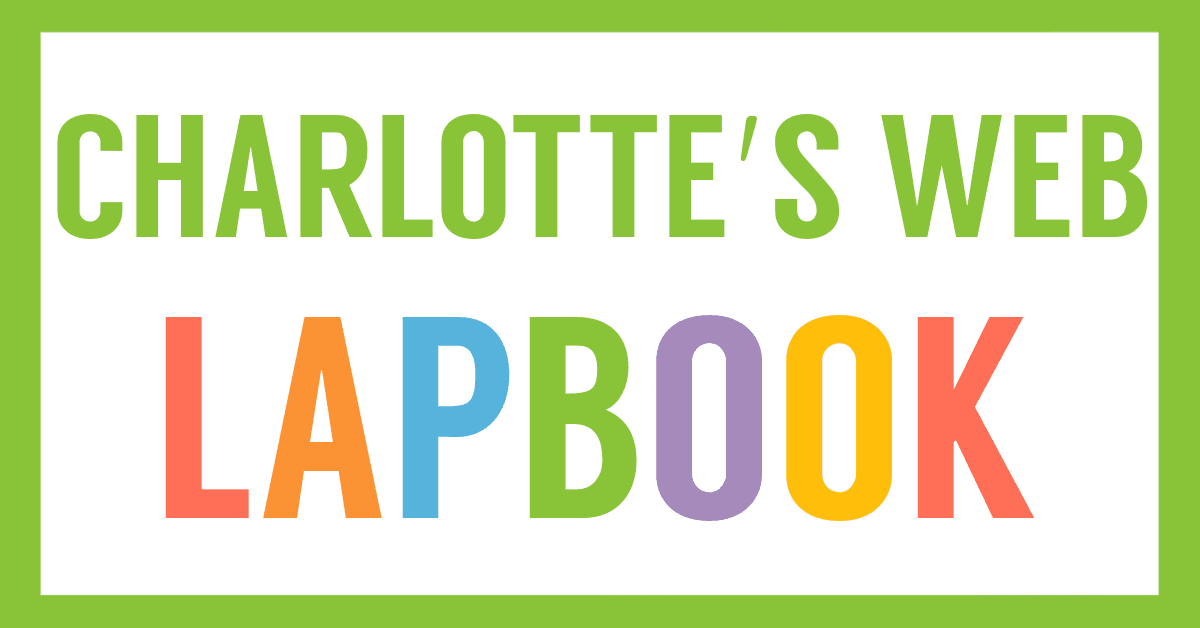Affiliate Disclaimer
We sometimes use affiliate links in our content. This won’t cost you anything, but it helps us to keep the site running. Thanks for your support.
If food dropped like rain from the sky, wouldn’t it be marvelous! Or would it? It could, after all, be messy. And you’d have no choice. What if you didn’t like what fell? Or what if too much came? Have you ever thought of what it might be like to be squashed flat by a pancake?
from Cloudy with a Chance of Meatballs at amazon.com
This fun book about edible weather is the base for lessons on community helpers, maps, recycling, food sources, and more! Grab our free Cloudy with a Chance of Meatballs unit study & lapbook and start your learning adventure.
Thanks to Lisa Martin for writing the lessons for this Cloudy with a Chance of Meatballs unit study.
Cloudy with a Chance of Meatballs Unit Study Lessons
This unit study includes lessons and printables based on the book Cloudy with a Chance of Meatballs by Judi Barrett.
Here are some sample lessons from the Cloudy with a Chance of Meatballs Unit Study:
Language Arts: Compound Words
There are lots of examples of compound words found throughout this story: meatball, pancake, breakfast, everyone, schoolhouse, leftovers, townspeople, northwest, sidewalks, overcooked, downpour, etc. Discuss compound words with your student.
Language Arts: Newspaper Writing
Have your student write a newspaper article for one of the extreme weather events in the story. Look at examples of newspaper articles in your local newspaper. Make special notice of the titles (see previous lesson); read titles to your student and ask him if he would like to hear the rest of the article based on the title.
Science: Weather
Snow is formed when ice crystals in a cloud bump into each other and stick together. If the temperature of the air below the cloud is cold enough, snow falls. If the ground temperature is not cold enough, the snow will melt. All snowflakes have six sides, and some snowflakes have as much as 100 ice crystals. You will never find two snowflakes that are alike. Have your child decorate a notebook page with cut out snowflakes, and describe in his own words how snow is formed.
What causes the wind? Air is made of tiny particles called molecules. As these molecules heat up, they expand, move faster, and spread out. When the molecules get cool, they contract, move slower, and stay together. So as the sun warms the air, the air rises. The cold air rushes in to take the place of the warm air. We feel this movement of air as wind. For further research, study the Beaufort Wind Scale to see what constitutes a fair breeze, moderate gale, or storm winds.
Clouds are an important part of the water cycle, in which the tiny water particles in the air are trapped together. Clouds bring moisture to the earth in the form of rain, sleet or snow. There are four kinds of clouds. Stratus clouds form in layers when air is forced to rise when passing over mountains. Cirrus clouds look like feathery wisps, formed very high in the atmosphere and are often formed of ice crystals. Cumulus clouds are the big puffy clouds that carry the most moisture. When many cumulus clouds gather together they form the dark, rain-bearing cumulonimbus clouds. Pick out the four kinds of clouds in the illustrations of the book.
Hurricanes are powerful, whirling storms. They form over the warm oceans close to the equator and can travel hundreds of miles. As the sun heats up the seas, warm water vapor rises into the air forming large thunderclouds. Wind causes the masses of clouds to whirl strongly. The hurricanes move across the ocean creating huge waves that can crash on the shore. Often times, the hurricane never makes it to land. When they do come to land, they bring high, destructive winds and heavy rains.
How is a tornado formed? Tornadoes start deep within vast thunderclouds, where a column of strongly rising warm air is set spinning by high winds streaming through the cloud’s top. As air is sucked into this swirling column it spins very fast, stretching thousands of feet up and down through the cloud, with a corkscrewing funnel descending from the cloud’s base-the tornado.
Some danger signs to look for include dark, often greenish sky, large hail, large, dark, low-lying cloud (particularly if rotating), and/or loud roar, similar to a freight train.
You can grab a copy of the entire Cloudy with a Chance of Meatballs Unit Study and Lapbook in an easy-to-print file at the end of this post.
Cloudy with a Chance of Meatballs Lapbook Printables
In addition to the unit study lessons, the free file also includes mini-books for a Cloudy with a Chance of Meatballs lapbook.
- Compare and Contrast Matchbook
- Bible Verse Pocket
- Map of Chewandswallow
- Water Cycle Wheel
- Today’s Menu Tri-fold Book
- Compound Words Folder and Cards
- How Can I Help Recycle? Simple Fold
- News Report Mini-book
- Weather Report Clipboards
- Wild Weather Flap Book
- Community Helpers Hotdog Book
How to Get Started with Your Cloudy with a Chance of Meatballs Unit Study & Lapbook
Follow these simple instructions to get started with the Cloudy with a Chance of Meatballs Unit Study:
- Buy a copy of the book, Cloudy with a Chance of Meatballs, or borrow one from your local library.
- Print the Cloudy with a Chance of Meatballs unit study.
- Choose the lessons you want to use with your student (a highlighter works great for this).
- Choose and prepare the lapbook printables you want to use with your student.
- Enjoy a week of learning about weather.
Get Your Cloudy with a Chance of Meatballs Unit Study & Lapbook
Simply click on the image below to access your free Cloudy with a Chance of Meatballs Unit Study and Lapbook.

